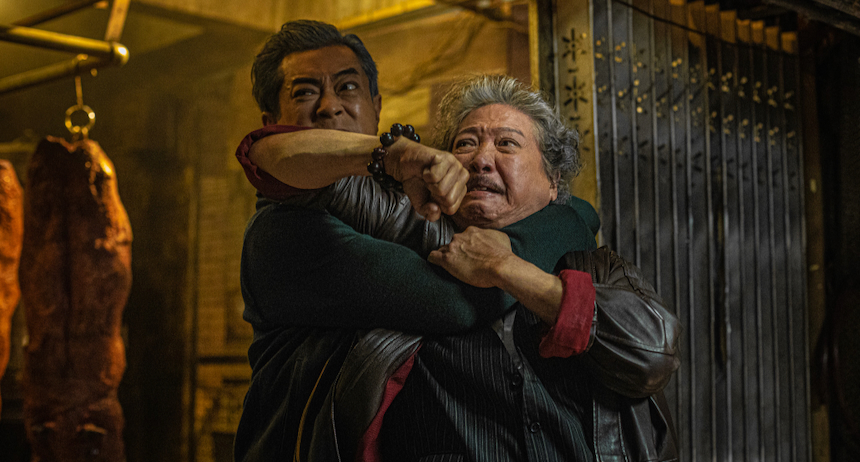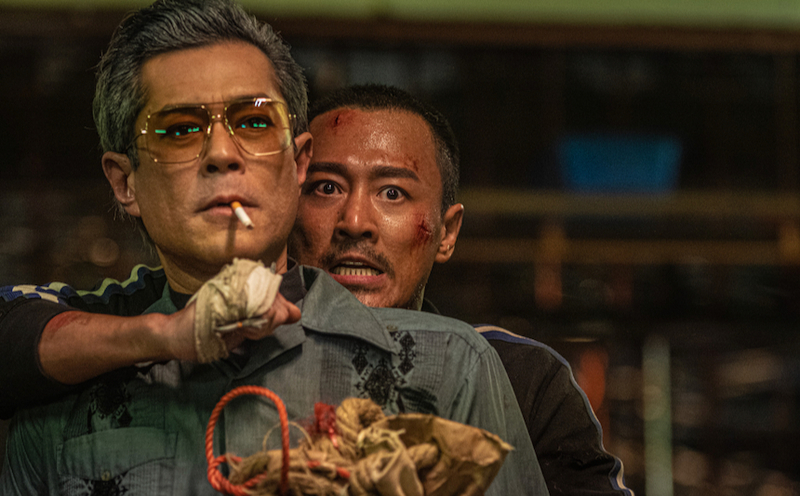Cannes 2024 Review: TWILIGHT OF THE WARRIORS: WALLED IN, Hong Kong's Nostaglia-Fuelled Gangland Throwdown
Soi Cheang directs a star-studded Hong Kong Cast including Louis Koo, Sammo Hung, Philip Ng, Raymond Lam, Fish Liew, Aaron Kwok and more

Since it was first announced back in 2013, the nostalgia-fuelled martial arts epic set within the labyrinthine back alleys of Kowloon Walled City has nurtured a mythical status to rival the notorious neighbourhood itself. Development of the project dates back to the early 2000s, with such prestigious names as John Woo, Johnnie To, Chow Yun-fat and Donnie Yen rumoured to be attached at one point or other. Filming finally commenced in November 2021, at the height of the pandemic lockdown, with director Soi Cheang at the helm, and Louis Koo, Raymond Lam, Sammo Hung and Philip Ng headlining the cast for Koo’s production company One Cool Films.
Opening under the unwieldy English title Twilight of the Warriors: Walled In, the 80s-set gangland throwdown opened in Hong Kong and mainland China on 1st May, ahead of its international premiere as part of the Cannes Film Festival’s midnight section later this month. The results of almost two decades of hard graft has been ravenously received by audiences, with the film taking close to US$60 million on the mainland in its first 10 days. In Hong Kong, Twilight is playing round the clock on almost every available screen, muscling out Hollywood blockbusters Godzilla x Kong: The New Empire, The Fall Guy and Kingdom of the Planet of the Apes, much in the spirit of the feuding triads on screen.
In its first 10 days, Twilight of the Warriors has grossed over HK$30 million, roughly equivalent to US$4 million. While this might not seem like a huge amount of cash, skeptics should be reminded that Hong Kong is but a single city, with a population of around 7.5 million. To put that figure in context, the highest grossing Hong Kong film of all-time is 2023’s courtroom drama A Guilty Conscience, which took HK$115 million (around $15 million) during its entire run, which distributor Edko Films ensured lasted months, thanks to their ownership of the city’s Broadway cinema chain. Suffice to say, Twilight of the Warriors is likely to be a mainstay in local cinemas throughout the summer, and could well challenge that number one spot, if support for the film sustains its current pace.
Set in the early 1980s, while Hong Kong was still under British rule, the film follows refugee Chan Lok Kwan (Raymond Lam) who is struggling to secure an ID card on the black market that will grant him residential status in the territory. He ekes out a living on the underground fight circuit, which attracts the attention of triad boss Mr. Big (Sammo Hung). When Lok Kwan rejects Mr. Big’s offer to join his gang, he is cheated out of his winnings and flees into Kowloon Walled City. This cavernous maze of dilapidated tenement buildings and foreboding back streets lies beyond the borders of Mr. Big’s territory. After many years of hard fought turf wars, the city is overseen by Cyclone (Louis Koo), on behalf of his boss, Chau (Richie Ren).
While Lok Kwan’s frenzied arrival immediately draws the aggressive attentions of Cyclone’s gang, their priority is to ensure that Mr. Big’s men, led by Philip Ng’s ferociously mulleted King, don’t cross the threshold into their territory. Cyclone takes a shine to Lok Kwan, with his no-nonsense attitude and willingness to work hard to earn his protection, and he is eventually taken under the benevolent boss’ wing and brought into the gang. It is only a matter of time, however, before Lok Kwan’s presence raises tensions to fever pitch, and all out gang warfare erupts within the walled city’s claustrophobic streets.
The real Kowloon Walled City was demolished in 1993, so filming on location was not an option for director Soi Cheang and his crew, however production design is stellar across the board. Filmed on a pair of elaborately constructed sound stages, the detail and craftsmanship are second to none. Much of the film’s appeal for local Hong Kong audiences is undeniably due to the nostalgic fascination the city holds for this mythical neighbourhood, and how impressively it is recreated here. For older moviegoers, they may well harbour first-hand knowledge of the favella-like collection of buildings that stood, like a half-collapsed game of Jenga, just beyond the site of the old Kai Tak airport. For others, too young or understandably weary to cross the walled city’s threshold, Cheang’s film provides the perfect opportunity for a guided tour, safe from the perils of thugs, addicts, or other ne’er-do-wells rumoured to have loitered in the shadows.
Of course, Cheang is careful not to demonise the residents, instead depicting Kowloon Walled City as a microcosm of Hong Kong itself. A vibrant overpopulated community brimming with families, children, small businesses and restaurants (the cha siu fan is second-to-none!), it is a neighbourhood much like any other - initially cautious of outsiders, but ultimately welcoming and warm-hearted once their trust has been earned. Perhaps more successfully than any other element in the film, Cheang creates a vivid, affectionate, fully lived-in portrait of a struggling, resilient working class neighbourhood.
The other great draw for audiences is of course the abundant martial arts on display throughout the film. At 72 years of age, Sammo Hung’s golden days may well be behind him, but he is surrounded by an abundance of youthful, energetic and impressively athletic talent. Chief among these is Philip Ng, whose talents behind the camera as a choreographer and trainer have been growing in stature for more than two decades. This has led to lead roles in the likes of 2014’s Once Upon a Time in Shanghai and, as Bruce Lee, in the dodgy 2016 US production Birth of the Dragon. Here, however, Ng effortlessly steals the show, rising to become the film’s primary antagonist, while sporting ridiculous hair, outlandish outfits and oversized aviator sunglasses.
Raymond Lam exudes noble stoicism in the film’s central role, winning over not only Koo’s grey-haired patriarch, but also the younger generation of suspicious, fiercely territorial foot-soldiers, whom inevitably become his sworn blood brothers. The increasingly ubiquitous Fish Liew is the film’s sole female character, and disappointingly is given little to do beyond putting a pretty face to the community’s civilian population. There are moments of humour scattered throughout, as well as an abundance of delightful period details, ranging from pop classics to vintage comic books, that will doubtless seduce anyone who lived through the time period.
Twilight of the Warriors: Walled In (again, this is an appalling title that will hopefully be changed in time to mirror the original Cantonese title, Siege of the Walled City) is precisely the type of celebratory Hong Kong movie that local audiences are responding to right now. It never descends to the grimy, nihilistic depths of Soi Cheang’s recent efforts Limbo or Mad Fate, neither does it eclipse past martial arts classic to raise the bar of what can be accomplished with a few wires and blades and tightly-executed choreography. In fact, the action sometimes veers a little too far into cartoonish parody for some hardened tastes.
Instead, the film serves as a celebration, or perhaps that should be commemoration, of what Hong Kong and its local film industry have accomplished in the past. The film ends with its survivors contemplating the future of their home, as they are faced with the reality that the city is to be demolished. While they vow to remain loyal to one another no matter what the future throws at them, they reluctantly acknowledge that some changes are inevitable, and their fate remains uncertain. This sentiment not only reflects their attitude towards the impending destruction of their homes, but the Hong Kong handover a few years later. In 2024, it also echoes the feelings of so many people in Hong Kong, where the city’s status quo has once again been disrupted, and its future is shrouded in unsettling uncertainty.

Do you feel this content is inappropriate or infringes upon your rights? Click here to report it, or see our DMCA policy.







